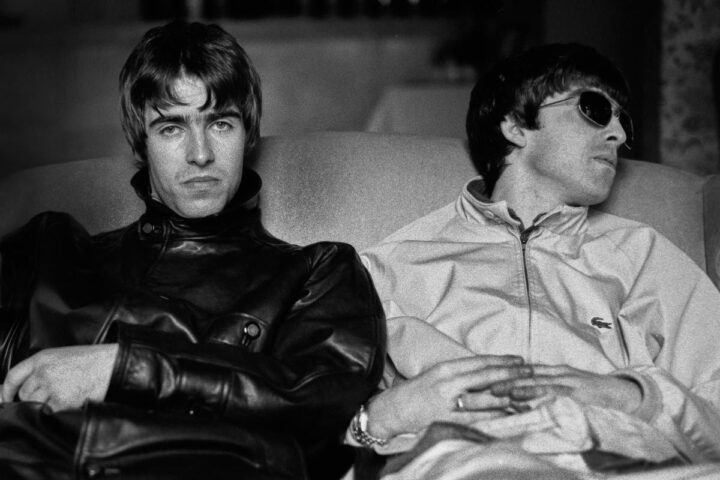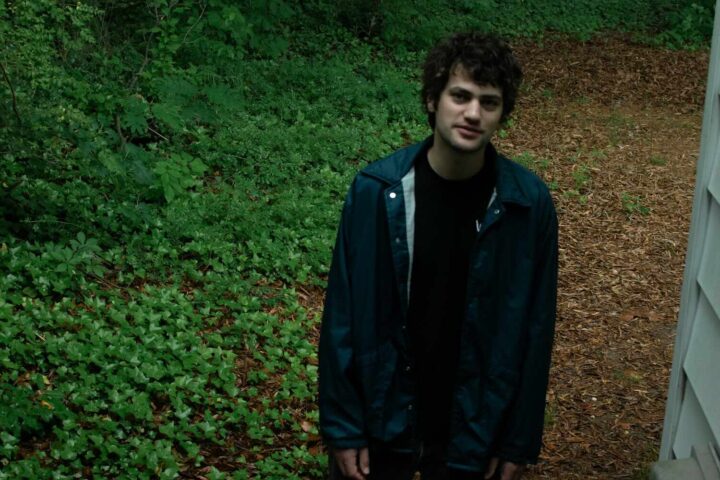As an Icelandic artist living in New York after 9/11, Björk felt out of place amid the feverish patriotism and xenophobia that proliferated in the wake of the terrorist attacks on the United States. While the Iraq War—and her neighbors—raged, the singer tended to her newborn daughter, Ísadóra, rekindling her fascination with the body and its generative powers.
Björk’s 2001 album Vespertine was built around the quietness and intimacy of domestic life, made tactile by hyper-specific, sensual lyricism. Inspired by her relationship with Matthew Barney, the album is bounded in scope by the four walls of the home, and the process of creating it was similarly insular, with Björk spending hours assembling microbeats on her laptop.
Committed to an emphatically different production approach for her next album, Medúlla, Björk eschewed Vespertine’s electronic beats and custom-made music boxes in favor of one instrument: the human voice. By embracing a cappella music, she centered the body as a conduit to connection and creation (“medúlla” means “marrow” in Latin).
In 2004’s splintered political moment, Björk sought to highlight the voice as foundational to both interpersonal relationships and musical tradition. To that end, the artist gathered an international company of vocal musicians with disparate regional techniques and styles, recording in 18 locations, including Iceland, Brazil, and New York.
Medúlla’s opening track, “Pleasure Is All Mine,” features wordless vocalizations and an alluring slow-build structure that allow space to introduce a palette of vocal colors, not unlike the tuning of an orchestra. Inuk throat singer Tanya Tagaq rasps, an Icelandic choir harmonizes, and beatboxer Rahzel of the Roots produces a sound that could best be compared to a distant sonic boom. At the center, of course, is Björk, whose unmistakable voice—drawing on an array of influences including Icelandic folk, choral music, punk, and vocal jazz—swoops between registers and lays out the album’s ethos: “When in doubt, give.”
RELATED STORY
Every Björk Album Ranked
Björk’s music exists at the nexus of pop and art, of the digestible and the avant-garde, and Medúlla, more than any of her albums before or since, exhibits a dramatic back-and-forth between traditionalism and experimentation. Which is to say that no other album by Björk, or any artist, sounds quite like it.
At one end of the accessible-bizarre spectrum is “Vökuró,” a solemn, gorgeously simple Icelandic lullaby that was originally conceived for Vespertine but whose medievalisms better suit Medúlla’s suspicion of modernity. Björk keeps her vocals mostly restrained to slot into the song’s plaintive arrangement, driven by the choir.
At the other end is “Ancestors,” possibly the album’s most challenging track, marked by a cacophony of moans, sighs, grunts, and wails. Tagaq takes co-lead, demonstrating the variety of sounds the voice can produce. Björk has a gift for tapping into the primal through volume and grit, as on Vespertine’s “Pagan Poetry” and “Hyperballad,” from 1995’s Post. On “Ancestors,” however, her voice doesn’t serve a greater song structure or lyrical theme, instead commanding attention to itself as a product and extension of the body.
Medúlla’s best songs course with visceral imagery and energy. “Who Is It” is a chirping pop tune propelled by a remarkable one-take beatbox by Rahzel, mixing simplistic lyrics (“Who is it that never lets you down?/Who is it that gave you back your crown?”) with bodily metaphors like a “skeleton of trust.” Similarly, “Triumph of a Heart” alternates between a singalong-worthy chorus and verses that put a microscope to the physiological processes associated with love: “The veins support/Blood that gushes impulsively toward/The triumph of a heart.” (Björk continues to explore the effects of love and heartbreak in the body, an especially potent iteration being the ripped-open-chest motif on 2015’s Vulnicura).
Björk’s defiance comes into view where her impulse to give chafes against the cynicism of the modern world. “Where Is the Line” sees her being financially exploited until she decides that “enough is enough.” Faith No More’s Mike Patton injects a black-metal influence with his thundering bass vocals, which are pitched down an octave to better contrast a chorus of sopranos. In the song’s stomach-churning music video, directed by Gabríela Friðriksdóttir, Björk gives birth to a writhing, goo-covered creature before being engulfed by her environment.
Even when Björk is immersed in the bliss of motherhood, the turmoil of the outside world hovers in the periphery. On “Mouth’s Cradle,” a song about breastfeeding that’s dotted with chopped-up vocal samples, she remarks that bonding with her child provides “a shelter to build an altar away/From all Osamas and Bushes.” Björk’s emotional conflict culminates with “Desired Constellation,” in which her voice, stunning and somber, cries out to a world that has slipped from her grasp: “How am I going to make it right?”
Just a couple weeks ahead of Medúlla’s release, Björk performed the swirling “Oceania” at the Olympics opening ceremony in Athens. Sporting a rippling blue dress that spilled out into a sea of fabric, she embodied the ocean, a mother figure connecting all human life. At an event that is as much about international communion as it is about competition and difference, the song, co-written by frequent collaborator Sjón, served as a reminder of people’s smallness and commonality—“You show me continents/I see islands/You count the centuries/I blink my eyes”—and the power of the body to achieve feats of wonder.
Since 2001, we've brought you uncompromising, candid takes on the world of film, music, television, video games, theater, and more. Independently owned and operated publications like Slant have been hit hard in recent years, but we’re committed to keeping our content free and accessible—meaning no paywalls or fees.
If you like what we do, please consider subscribing to our Patreon or making a donation.






